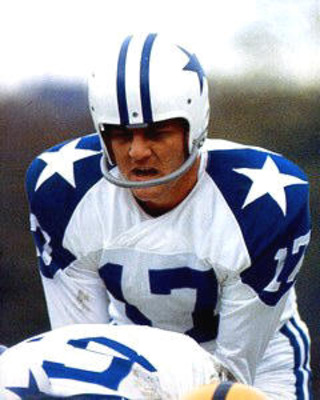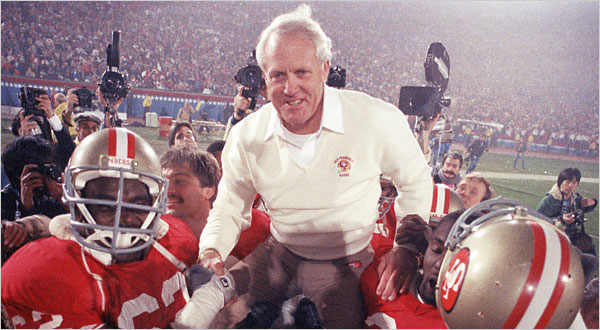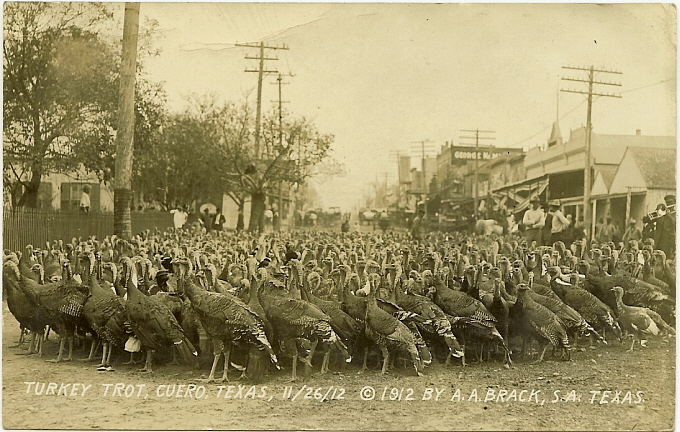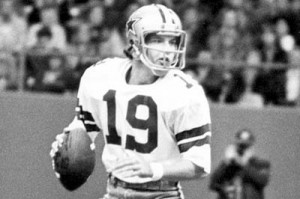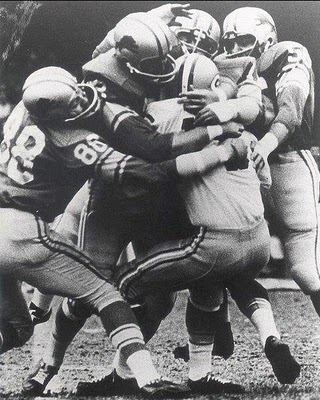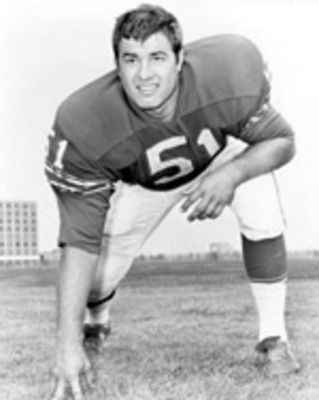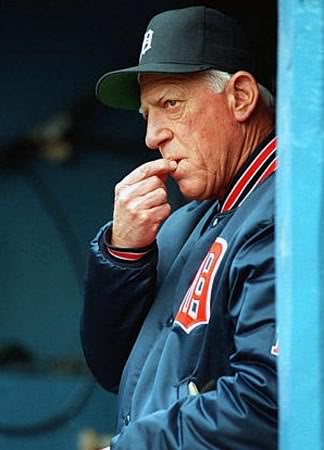My perspective on African American athletes in the 1960s was pretty much formed by whatever was written about them in the press at the time. It was a very impressionable time for me, and the gang I grew up with, and I remember we idolized many pro athletes and didn’t really make much of what color they were, as long as they helped whatever our favorite team at the time was win games. I read a column over the weekend in which retired Buffalo News columnist Larry Felser recalled his first meeting with Buffalo Bills star Cookie Gilchrist. He was in the team’s locker room trying to get Cookie to do an interview, and Gilchrist told him he couldn’t at the moment but to give him his address and he would do it later. Sure enough, Gilchrist showed up at his house and stayed for over 3 hours, granting the interview. It reminded me of what Bill Russell, the former Celtic great and another of the greatest athletes of the ’60s said, when asked why he refused to sign autographs. Russell said that signing his name on a piece of paper for a stranger felt impersonal, and that he’d rather stop and have a five minute conversation with a person than sign his name and have that person walk away. I think there was a purpose to Gilchrist’s request to meet Felser at his home. It was a test of sorts, to see if the young writer respected him enough as a man to actually invite him into his home, rather than just do the interview in the “safe” confines of the locker room. Looking back, I believe that was what a lot of black athletes at the time were really looking for – to be shown respect as men in a time when in a lot of places they still weren’t allowed to be served in restaurants, or had to use separate bathroom facilities, or stay in separate hotels on the road than their white teammates. They were searching for basic human dignity. One of my athletic heroes growing up at that time was the legendary Cleveland Browns’ fullback, Jim Brown. I recall reading a story once where Brown came into the locker room carrying a briefcase. He was already starting to look into a post-football acting career, and also was beginning to become involved in the growing Civil Rights movement, and carried a lot of papers having to do with these non-football interests in that briefcase. When a sportswriter asked him why he needed a briefcase, he responded that he was a businessman. The writer ridiculed him in a column and labeled him a “malcontent”, which was a term that was tossed around a lot back then by white writers when they were looking to describe black athletes whose behavior they didn’t understand. You could write a novel documenting what Muhammad Ali went through alone. When Curt Flood, an African American outfielder for the St. Louis Cardinals, challenged baseball’s reserve clause tying a player to his team, he was called a malcontent and worse, and eventually was unofficially blackballed from the game by owners. Of course, every modern day player who signs a huge free agent contract should thank Flood for his courage. I admire and idolize the players from that era even more now than I did then, armed with the perspective of a grown man who now sees the battles they fought on the field and off.
Archive for the ‘Feature Stories’ Category
Remembering Bob Feller
Baseball lost one of it’s greatest players, and greatest ambassadors of the game, this week when Bob Feller passed away at the age of 92. Feller joined the Cleveland Indians in 1936 at the age of 17, and pitched for 18 seasons with the Tribe, anchoring one of the sport’s greatest starting pitching rotations ever. Feller was the ace of the staff the last time Cleveland won a World Series, in 1948. He was also part of the team’s outstanding staff of 1954, when the Indians won 111 games, along with Early Wynn, Bob Lemon and Mike Garcia. Feller pitched 3 career no-hitters, including the only no-no to be pitched on opening day, in 1940. “Rapid Robert” was known for his legendary fastball, and is probably the greatest Cleveland Indian player of all time. He was inducted into Cooperstown in 1962, and is always in the conversation when the greatest pitchers of all time are considered.
Feller was also a solid member of what is now referred to as “The Greatest Generation”, the generation that fought in World War II. The day after the attack on Pearl Harbor, he enlisted in the Navy and immediately volunteered for combat duty. He missed four seasons of baseball while serving during the war, and earned 5 campaign ribbons and 8 Battle Stars. He is the only Chief Petty Officer in the Baseball Hall of Fame. Feller wound up with 266 career wins, the most in Indians’ team history, and easily would have gotten 300 wins (the measuring stick for greatness among pitchers) had he not lost all that time to military service.
After his retirement from the game, Feller was a tremendous ambassador for baseball, and was frequently seen at games in Cleveland, often throwing out the first pitch. In fact, he threw out the first pitch at the Tribe’s spring training opener in Goodyear, Arizona this past season. He was also a popular interview among local media, and was very opinionated about the game.
Posted in Baseball, Feature Stories
NFL – Remembering Don Meredith
It’s a shame that a lot of younger football fans don’t even remember Don Meredith, who passed away on Monday of a stroke, as an original member of the Monday Night Football broadcast team, yet alone his playing career as a quarterback for the Dallas Cowboys. Meredith backed up Eddie LeBaron at QB in Dallas in the franchise’s first 2 years of existence in 1960 and ’61, split time with LeBaron in ’62, then became the full-time starter for coach Tom Landry’s team in 1963. He then proceeded to guide the ‘Boys into their first winning era, on their way to becoming “America’s Team”. It’s unfortunate that Meredith never won a championship in his career. He played 9 seasons and was retired by the time Dallas won their first Super Bowl in 1971. During Meredith’s era, the Cowboys gained a reputation as being one of those teams that “can’t win the big one”, and in Meredith’s two title game encounters with Green Bay, in 1966 and ’67, he didn’t play particularly well. In ’66, the game was played in Dallas’ home stadium, the Cotton Bowl, and Green Bay jumped out to an early 14-0 lead. Meredith led a comeback and made a game of it, even driving the Cowboys to Green Bay’s 2 yard line with a chance to tie the game late in what was a shootout style of game. Meredith threw an interception that sealed the win, 34-27, for the Packers. The next year, the same 2 teams played for the NFL title again, this time in Green Bay’s Lambeau Field in what would turn out to be one of the most memorable games in league history, the “Ice Bowl”. Played in horrid, frigid conditions, neither team mounted much offense in the game. However, Packer signal-caller Bart Starr is remembered for scoring the winning TD on a quarterback sneak, while Meredith totaled 59 yards passing for the afternoon.
What I remember about Meredith is that he was a gamer. He took vicious hits and kept bouncing back. He was a real leader of his football team, and the Cowboys’ reputation of not being able to win the big one had nothing to do with Meredith’s desire to win. His teammates always respected him and his inner drive to win. Following his retirement, he became an analyst on NFL telecasts, eventually joining the ground-breaking MNF crew. Teaming with Howard Cosell as analysts, he carved out his “Dandy Don” personna by playing off Cosell’s arrogance with his witty, country charm, as Keith Jackson, and then Frank Gifford as play-by-play announcers, played the straight man. It was really the first time a football announcing team brought entertainment to the booth, and became part of the story as much as the game was. Those early Monday Night Football telecasts, and the humor and entertainment Meredith and Cosell provided, were huge in helping to grow the NFL into the monster it is today – the real national pastime. So now, to quote “Dandy Don” himself, “turn out the lights, the party’s over”, for Meredith on this earth. His legacy as both a player and analyst deserves to be mentioned, because it was a big part of the game. Rest in peace, Dandy Don.
Posted in Feature Stories, Football
Remembering Bill Walsh
On this day in 1931, legendary NFL head coach Bill Walsh was born in Los Angeles, California. I recently read a short biography of Walsh and it reminded me of a fact that seems lost in today’s NFL – that the greatest coaches of all time are the ones that are the best teachers, not the ones who rant and rave and put on a big macho act. Paul Brown was an innovator in that he was the first to introduce classroom training and film study to the NFL. Vince Lombardi has a reputation as a taskmaster but in reality he was one of the best “teaching” head coaches of all time. He was a teacher before he decided to go into coaching. Tom Landry was as stoic a figure on the sidelines as there’s ever been. His method was all about teaching and preparation throughout the week in practice, not yelling and screaming on the sideline on Sundays. Chuck Noll, who played for Brown in Cleveland, always had a reputation for being low-key in Pittsburgh. Noll was a no-nonsense coach, but like the others was all about having his team prepared. Joe Gibbs always had a Mr.Peepers persona, peering out through his eyeglasses, but he too was a great “teacher”.
Walsh was the ultimate in football coaches who you’d never guess were coaches if you met them on the street. He was professorial to the point where he came across as arrogant. Old school football people always scoffed at Walsh’s “West Coast” offense, which substituted a short “dink and dunk” passing game for the running game. His offense took the opposite approach of the norm, which was that you had to run the ball effectively to set up the passing game. Walsh would pass the ball to set up the running game. It wasn’t a particularly physical style of football, which is what drove football purists crazy, but it was definitely an extension of Walsh’s personality – a scholarly approach to the game rather than the usual “three yards and a cloud of dust” approach. Walsh had the knack for bringing in players who fit his system and were mature to the point where they didn’t need constant babysitting and policing (see this year’s Dallas Cowboys or Minnesota Vikings for examples of that). Joe Montana, Jerry Rice, Ronnie Lott, Roger Craig and Matt Millen were not only the team’s best players but also the hardest working. In his early formative years, Walsh was not a great athlete, or a top student either. Obviously he was a genius when it came to football though. When he worked at San Jose State as a graduate assistant coach, the head coach wrote this note in his personnel file: “I predict Bill Walsh will become the outstanding football coach in the United States.” There was a great quote in that biography on Walsh that sums up his scholarly approach to the game. ESPN analyst Beano Cook said this about him: “If Bill Walsh was a general, he would be able to overrun Europe with an army from Sweden.” Walsh was definitely one of the NFL’s greatest coaches of all time, and deserves the “genius” label that he used to seem to relish wearing. When he passed away in 2007 the league lost a great resource, and if there’s one thing current NFL owners can learn from him, it’s that every once in awhile when your team is struggling and your knee-jerk reaction is to blame the coach for “losing control of the locker room” and fire him, maybe a closer look at what kind of players are in that locker room should be in order.
Posted in Feature Stories, Football
Turkey Trot Mania
One of the highlights of Thanksgiving Day each year is the running of the Turkey Trot in various cities around the country. They are very popular as people anticipating eating the large Thanksgiving feast run the race, usually a 5K, to burn off calories in advance of eating all that food. In researching this post, I was surprised to learn that here locally, in Buffalo, New York, we have the oldest and one of the most popular Turkey Trots in the country. Established in 1896, it not only is the oldest of its’ kind but also the oldest continually-running public footrace in North America. The Turkey Trot races usually are a fundraising event associated with some type of charity, and here in Buffalo they benefit the local YMCA.
Detroit and Dallas, which both host Thanksgiving Day NFL football games, also run Turkey Trot races, and Dallas boasts having the largest Thanksgiving race in the country. Berwick, PA has the annual Berwick Run For The Diamonds, a nine mile run established in 1908. Some other notable cities that hold Turkey Day races are Philadelphia, Cincinnati, Atlanta, Manasquan, New Jersey, Manchester, Connecticut, Andover, Massachusetts, and the Silicon Valley Turkey Trot held in the San Francisco Bay Area. Pictured below is by far the most unique Turkey Trot. Held in Cuero, Texas, which was named one of the “Coolest Small Towns In America”, it isn’t just a race but a race that is part of an entire November celebration known as Turkey Fest. Cuero is officially called the “turkey capital of the world”, and its’ annual festival includes not only the race but turkey calling and prettiest turkey contests, and a turkey toss. What sets Cuero’s turkey trot apart from the rest is that it’s not a foot race involving people, but a turkey trot using actual turkeys.
Posted in Feature Stories, General
NFL – Classic Thanksgiving Games – Part II
Inaugural Dallas Thanksgiving Game vs. Browns in 1966.
Detroit has had the honor of hosting the NFL’s annual Thanksgiving Day game since 1934, but in 1966, the league added a second Turkey Day game, awarding the honor to the Dallas Cowboys. The Cowboys played the Cleveland Browns in their inaugural game that year, and the game was pivotal in the young franchise’s development. The Cowboys entered the game with a 7-2-1 record while the Browns, who were 7-3, had played in the 2 previous NFL Championship games and were a powerhouse at the time. Tom Landry’s club won the game, 26-14, and would go on to have an astounding 20 straight winning seasons. The NFL’s move to put an annual game in Dallas was a good decision by commissioner Pete Rozelle, as the team, since that first game in ’66, has been a marquee franchise ever since. My daughter, who is now in her 30s, has fond childhood memories of family get togethers – she recalls them being Sunday afternoons – where the family was gathered around the televison and the Cowboys were always playing a late afternoon game. She distinctly remembers Landry, with his trademark fedora hat and stoic look, standing on the sidelines, with the large silver stars lining the walls of the old Texas Stadium behind him. I think she may actually be remembering Thanksgiving Day celebrations rather than Sundays, since the Cowboys have been Turkey Day fixtures her whole life.
The most memorable Dallas Thanksgiving game has to be the “Clint Longley” game, played on November 28, 1974. It was a matchup of the Cowboys and their most bitter division rivals, coach George Allen’s Washington Redskins. These 2 teams regularly battled it out for NFC supremacy in the 1970s, and this year was no exception. Allen’s “Over The Hill Gang”, a collection of veterans and old misfits that the coach fielded due to his disdain for playing rookies, were challenging Landry’s always strong team for first place in the NFC East. The ‘Skins were dominating this game, and when veteran linebacker Dave Robinson hammered the Cowboys’ star QB, Roger Staubach, with a tackle so vicious that it knocked Staubach out of the game, it looked hopeless for the home town team. Staubach’s replacement was 22-year old unproven rookie Clint Longley, who had not played in a game up to that point. Longley had earned the nickname “The Mad Bomber” from his teammates for his habit of throwing errant passes and hitting Landry’s coaching tower in practice. He came into the game with his team trailing, 16-3, and wound up throwing 2 touchdown passes, including the game-winner to Drew Pearson, to lead the Cowboys to an improbable 24-23 win. Longley had no expectation of ever playing in the game and entered it totally unprepared, and afterward lineman Blaine Nye, his teammate, sarcastically called the win “a triumph of the uncluttered mind.” The game turned out to be Longley’s 15 minutes of fame, as less than 2 years later, he sucker punched Staubach from behind in the locker room during training camp, leaving Staubach requiring several stitches to repair his face. The team immediately traded Longley to San Diego, where his career faded. It was reported recently on the NFL Network that Longley wound up selling carpeting out of his car back in Texas.
Clint Longley in 1974.
Posted in Feature Stories, Football
NFL – Classic Thanksgiving Games – Part I
Green Bay’s Bart Starr is swallowed up by a swarming Lions’ defense.
On Thanksgiving Day, November 22, 1962, the NFL staged its’ annual traditional game between the host Detroit Lions and the visiting Green Bay Packers, and the game was one of the most memorable ever played on the holiday. A year later, this particular date would forever become etched in history by the assassination of President John F. Kennedy, but in 1962 the Lions played one of the most inspired games in franchise history on the date – a game that lives on today in Lions’ team history as the “Turkey Day Massacre”. The Packers were the powerhouse team in the league at that time, having won the championship under coach Vince Lombardi in 1961. They entered the annual holiday game with a perfect 10-0 record, and had beaten the Lions 9-7 in Green Bay earlier in the season on a last-second field goal. That game had stuck in the Lions’ collective craw leading up to the Thanksgiving rematch, and the team was not the mediocrity they are in today’s NFL – they were 8-2 and second to the Packers in the Western Division at the time. Detroit’s defense, led by Roger Brown, Alex Karras and Joe Schmidt, played its’ best game of the season that day, harrassing and swarming Packer QB Bart Starr all game long, and sacking him 11 times for over 100 yards in losses. Brown, a 300 lb. defensive lineman, had 5 of the sacks himself, including one where he tackled Starr in the end zone for a safety. The Lions won 26-14, and although they won the battle that day, Green Bay won the war, as this turned out to be their only loss of the season. The Packers finished 13-1 and won their second consecutive NFL title, on their way to 5 championships in a 7 year period, a feat that earned the small Wisconsin town the nickname of “Titletown, USA”.
Lombardi didn’t easily forget this game, however. At the time, the annual holiday game was not only hosted by Detroit, but the annual opponent, from 1951 until 1963, was always the rival Packers. Lombardi lobbied the league complaining about having to travel to a road game on a short week every year, and how much of a disadvantage it was to his club, and eventually commissioner Pete Rozelle relented and the league began rotating the opponent for the Lions each year. In 1966, the league added a second traditional Thanksgiving game in Dallas. Tomorrow, we’ll highlight a memorable game from the annual Dallas Thanksgiving series.
Posted in Feature Stories, Football
College Football Hypocrisy
There was a story in the news recently accusing one of this year’s leading candidates for college football’s coveted Heisman Trophy, Auburn quarterback Cam Newton, of insisting on being paid to sign a letter of intent to attend school at the time he was being recruited. It involves his father supposedly insisting on his son getting “anywhere from $100,000 to $200,000” to sign with Mississippi State. Nothing has been proven but every day someone else seems to be coming forward implicating at least the father, not necessarily Cam himself, to the point where the story will most likely influence the outcome of the Heisman voting this year. With Reggie Bush just recently returning his trophy from 2005 due to the NCAA finding he had received improper benefits while playing at the school, the voters this year will certainly be scared away from voting for Newton, whether there’s any proof of wrongdoing or not. To me, this is all hypocrisy on the part of the NCAA. They run around handing out sanctions to players and schools supposedly defending the “purity” and “sanctity” of their sports, while at the same time pocketing millions of dollars marketing those same players and schools. College basketball has been watered down in recent years, starting when star players like Kobe Bryant and LeBron James went straight to the NBA out of high school. Under the guise of protecting young players who declared for the pro draft who weren’t really pro prospects, the NBA and NCAA devised a system where players now have to complete at least a year of college ball before turning pro. This has created the “one and done” phenomenon, in which NBA calibre players now enroll and play at a school for a year before going pro, instead of taking the direct route from high school. Last season, the University of Kentucky had a roster of players considered to be national championship material. Four of their five starters were freshmen. The Wildcats didn’t win the title, but all five starters declared for the NBA draft, including top pick John Wall and #7 choice DeMarcus Cousins. So now there are going to be NCAA programs, promoting “student athletes” and running ads during televised games hailing what a great education their school offers, who in reality are fielding teams of one-year “rental” NBA players. The success of Bryant, James and others in the NBA proves that elite players can jump directly to the pro level in their sport. Football should do the same thing, allow players to be drafted out of high school if they’re good enough. The argument used to keep football players in school is that they’re not physically ready to compete in the NFL, but if that’s true, then the NFL “practice squads” are the perfect place for these players to develop while they learn their team’s system and how to be professional. The NFL and NBA only go along with these NCAA rules regarding drafting underclassmen under the threat of the schools not allowing pro scouts to visit the campuses. It’s all about money, for the NCAA, not the players. Those NCAA administrators are not going to give up their cash cows without a fight, and it’s a fight they’re winning, to the point of these young athletes being denied the right to work and earn a living in their profession. This is supposed to be a free country, but in this case, money trumps everything, including individual freedoms. It has created a system where sleazy agents work behind the scenes to get money and benefits for the players, and every once in awhile when it goes public, the high and mighty NCAA comes down hard with sanctions and fines and puts on a show that they are “keeping the amateur status of their sports programs clean”. Give me a break, please.
Posted in Feature Stories, Football
The Bob Kalsu Story
Yesterday was Veterans’ Day, a day when all the brave men and women who have served our great country are honored with a day of remembrance. Over the years there have been lots of stories of professional athletes who served bravely in combat during their youth, including legendary football coach Tom Landry, baseball star Ted Williams, football’s last 60 minute man – Chuck Bednarik, Steelers’ running back Rocky Bleier and recently, Cardinals’ safety Pat Tillman, who walked away from his big NFL contract to enlist in the Army after 9/11, then paid the ultimate price for that service, dying in what turned out to be a friendly fire accident in Afghanistan. One other athlete, who wasn’t a big name, was the only pro football player to be killed in action in Vietnam. That player was Bob Kalsu, an offensive lineman out of Oklahoma who appeared to have a bright future in the pros with the Buffalo Bills when he was called to duty. Kalsu had earned a spot in the starting lineup with the Bills in 1968, and was named the team’s Rookie of The Year. Following that season, Kalsu, in order to satisfy his ROTC obligation, entered the Army as a Second Lieutenant and arrived in Vietnam in November 1969 as part of the 101st Airborne Division. He was killed in action on July 21, 1970 when his unit came under enemy mortar fire at FSB Ripcord near the A Shau Valley. According to Thomas Militello, who was there the day Kalsu died, “he was killed trying to save the lives of his friends. He was a real hero.” His plight remained pretty anonymous for years, but in July 2001, Sports Illustrated printed an article bringing his courageous story to light. In 1999, NFL Films produced a feature story on Kalsu that won an Emmy, and a year later the Bills honored Kalsu by adding his name to their “Wall of Fame”. Kalsu’s story is a reminder that in this country’s history, people from all backgrounds, and all walks of life, have paid the ultimate price so that we can enjoy the freedoms we have. Kalsu only played one year for the Bills so his presence on the team’s Wall isn’t for his playing accomplishments, but the fact that 70,000+ fans can enjoy a Sunday afternoon cheering for their team, while living in a free country where all things are possible, is a direct result of the sacrifice he made. His may be the most deserving name to be honored on that wall.
Western New York servicemen stationed at FOB Kalsu in Iraq.
Posted in Feature Stories, Football, General
MLB – R.I.P. Sparky Anderson
It’s always sad when one of the genuine good guys involved in the sporting world leaves us, and that’s the case with the news last week of the passing of George “Sparky” Anderson, former major league baseball manager, from complications of dementia. It had been announced on November 3rd that Anderson was being placed in hospice care because of his deteriorating condition, and he died just a day later. What I remember about Anderson was that despite being one of the all-time winning managers in baseball, he was always humble and unassuming. Former Baltimore Orioles manager Earl Weaver has always said his strategy for managing was “combining good pitching with three run homers”, and Sparky had a similar philosophy. “I just get good players, fill out the lineup card, and stay out of the way. It’s amazing how you can become a genius doing that.”
He was the first manager to ever win World Series titles in both the National and American League, guiding the Cincinnati Reds “Big Red Machine” teams to back-to-back titles in 1975 and ’76, and in 1984 led the Detroit Tigers to a Series triumph over the San Diego Padres. The ’84 Tigers, under Anderson, were a dominating team, opening up the season with 9 consecutive wins and a scorching 35-5 record in their first 40, on the way to a 104-58 regular season record. They swept the Royals in the ALCS, then beat the Padres in 5 games to win it all. Over the years critics would always say that Anderson only won because his teams were loaded with great players. In Cincinnati, the Reds’ roster included some all time greats, including Pete Rose, Johnny Bench, Tony Perez, Joe Morgan, Dave Concepcion, Ken Griffey, Sr. and George Foster. There were no big names on the team’s pitching staff, and Sparky became known as “Captain Hook” for his habit of pulling his starters at the first sign of trouble and relying heavily on his bullpen. The ’84 Tigers had Kirk Gibson, Lou Whitaker, Alan Trammell, Chet Lemon, Lance Parrish and pitcher Jack Morris. While it is true that both teams were loaded with talent, I think the perception that Sparky was “lucky” came about because of that modest, unassuming nature and his jokingly always talking about “getting out of the way”. In any major league sport it takes a special kind of person to handle all the egos in a locker room loaded with talented players, and Sparky Anderson was one of the best at doing it. He was inducted into the Baseball Hall of Fame in 2000 by the Veterans’ committee, which usually has to take care of getting overlooked players and managers into Cooperstown.
Posted in Baseball, Feature Stories

